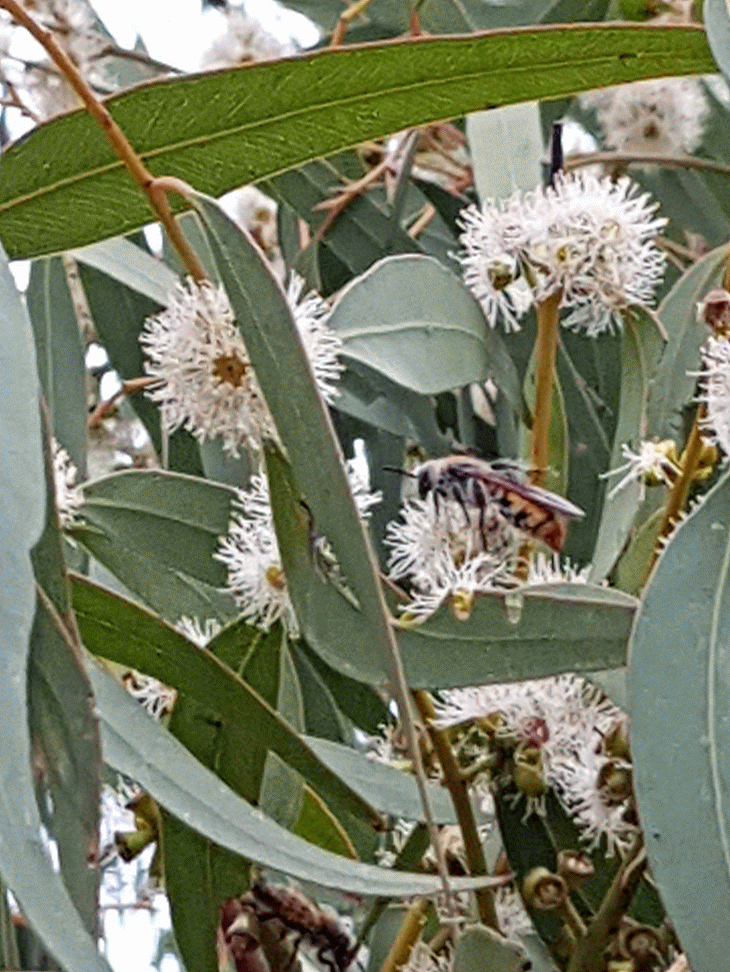Australian Native Bees
Nearly 20,000 known bee species are populating the world and over 1,600 species of native bees exist in Australia. Most native bee species are solitary, only a few live in colonies.
Despite the wide range of native bee species we rely on crop pollination by European Honeybees introduced to Australia from Europe.
Many thanks to Anne Dollin from Aussie Bee for her contributions to this page about Australian Native Bees.
Why keep European Bees in Australia?
Most of the food plants for us and our animal stock, like Broccoli, Carrots, Peas, Beans, Blueberries, Raspberries, Blackberries, Strawberries, Cherries, Almonds, Apples, Apricots, Pears, Sunflowers, Canola, Cucumber, Pumpkins, Melons, Zucchini etc. have been introduced to Australia by the European settlers. These plants do not naturally occur in Australia.
European Honeybees are the natural pollinators for these crops as well as for the flowers we have also imported, therefore they are best suited for pollinating these plants.
Although Australian Native Bees can be found in most of Australia's diverse habitats, not all of them are suitable for crop pollination as they are not living in large colonies, most native bees are solitary bees.
As we grow our crops in large concentrated areas we also need large numbers of pollinating bees in those areas when required, which can only bee achieved when larger bee colonies, kept in beehives, can be transported.
« Topics on this page »
Honey Production in comparison
And then there is the honey; mankind has had an interest in European Honeybees for thousands of years for their honey. As the honeybees originate from cooler climates they have developed the ability to gather and store great amounts of honey during the warm season to survive through the cold season. Bees from warm climates store very little honey if at all. And what is the reward for beekeeping without the honey?
Australian stingless bees only store about 1 kg of honey per year in their hives. A small niche industry is starting in Australia with this tangy 'Sugarbag honey'. However, the stingless bees cannot produce enough honey to supply Australia's large scale commercial needs. In comparison, in a good year here in Australia European Honeybees can produce a surplus of 70 to 100 kg honey in their hive.
Australian Stingless Bees
Of the 1,600 species of wild bees native to Australia about 14 species are stingless.
Some Stingless Bees have been "cultivated", i.e. kept in boxes which can be brought to the fields for pollination. Australian Stingless Bees however live only in the warmer climates and the number of hives being kept by beekeepers at present is limited.
Stingless bees are starting to be used for crop pollination of crops such as Macadamia and Avocado in Queensland and northern NSW. However, the vast majority of crop pollination in Australia is done by European honeybees.
Native Australian stingless bees are under threat from human development.
Bob the Bee Man aims to rescue and relocate colonies of the stingless native bees of Australia. His website is especially for tree loppers and vegetation management workers, firewood cutters, earthmoving contractors, timber getters of all types and the farming community.
Good information on Australia's Stingless Bees can be found on the Aussie Bee website
Blue-banded Bees Amegilla cingulata
Blue-banded bees (Amegilla cingulata) are native to Australia and are solitary insects. They are eye-catching because of their shimmering blueish colour and because they can often be seen hovering over a flower. They typically build their nests in sandstone, mud or the mortar-gaps in the brickwork of houses.
Blue-banded Bee
There has been a research program at the University of Adelaide working on the utilisation of native blue banded bees for pollination of greenhouse tomatoes.
Unfortunately funding for the project ceased at the end of 2009 and it has not led to commercial implementation. This seems disappointing, but it has to be remembered that the research needed to make these solitary bees work inside a greenhouse covers a large range of issues.
The development of the breeding program for bumblebees in Europe took twenty years and involved multiple research groups.
Australian Native Bees websites
The Aussie Bee website promotes the preservation and enjoyment of Australian native bees. It is run by Anne and Les Dollin of the Australian Native Bee Research Centre to showcase Australia's 1,600 spectacular species of native bees.
Kin Kin Native Bees are producers of hives of two species of native stingless bees, Tetragonula carbonaria and Tetragonula hockingsi. These hives are available for rental to commercial orchardists and for sale to the general public when available. Availability of hives is generally seasonal.
This website is for anyone who may come into contact with the stingless native bees of Australia - especially tree loppers and vegetation management workers, firewood cutters, earthmoving contractors, timber getters of all types and the farming community.
Australian Native Bees - Photos
Spotting a Native Bee is one thing - having a camera ready before it moves on, another...
below: hovering Blue-banded Bee in our backyard
hovering blue banded bee
< Large Australian Native Bee on Silver Leaf Stringybark >

< or is it a Native Australian Wasp? >